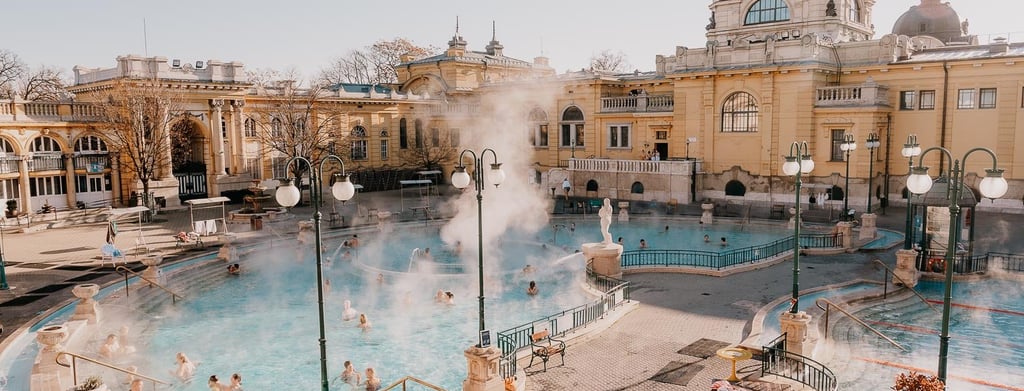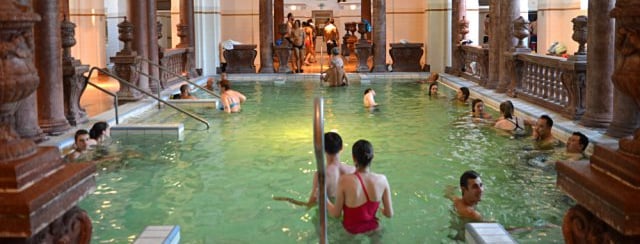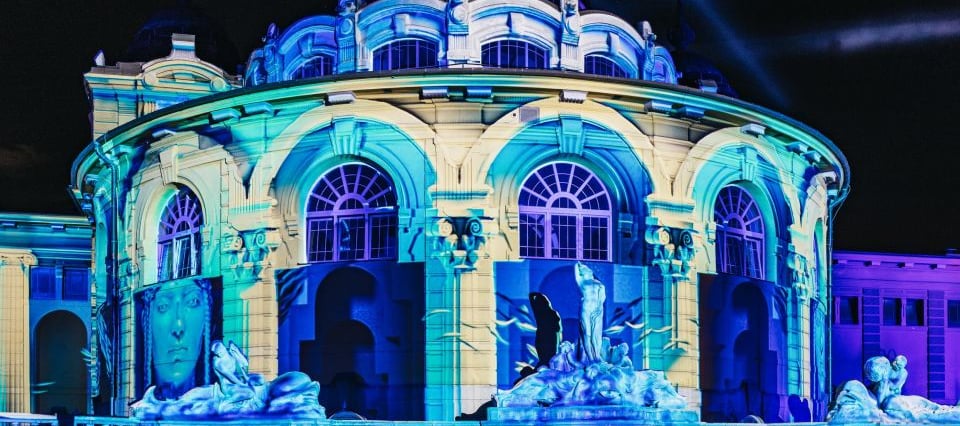Széchenyi Thermal Bath – Budapest’s Steamy Palace of Relaxation
Discover the fiery heart of Budapest's spa culture, where Neo-Baroque meets naturally heated bliss.


Step into the Széchenyi Thermal Bath and you don’t just step into hot water — you step into a full-body experience of opulence, history, and good old-fashioned Hungarian hedonism. Nestled like a sun-drenched gem in the City Park (Városliget) of Budapest, Széchenyi isn’t merely a spa — it’s a national treasure, a social playground, and possibly the only place on earth where you can play chess in a pool heated by geothermic fury.
Birth of a Bathing Behemoth
Széchenyi’s story begins beneath the surface — literally. The first exploratory well was drilled in the 1870s and hit a jackpot of thermal gold: rich mineral water bubbling up from deep in the Carpathian Basin. By 1913, a neo-baroque bathing palace arose, named after István Széchenyi, Hungary’s “Greatest Hungarian” and a man who never even dipped a toe in the place. But let’s not dwell on irony.
What started as a modest bathhouse quickly grew into the largest medicinal bath in Europe. The expansion in the 1920s added outdoor pools — which turned out to be a stroke of genius. Today, Széchenyi stretches like a balneal empire: 18 pools (15 indoors, 3 outdoors), 10 saunas and steam rooms, whirlpools, hydrotherapy jets, and enough marble to tile the Taj Mahal twice.
Water, the Elemental Star
If Széchenyi were a rock band, water would be its flamboyant lead singer — hot, mineral-rich, and unapologetically therapeutic. Sourced from a spring 1,246 meters underground, the water gushes to the surface at 76°C, then takes a quick chill pill (relatively speaking) to become bath-appropriate. The water is loaded with calcium, magnesium, bicarbonate, sulfate, and even a touch of fluoride — perfect for your joints, skin, and overall smug satisfaction.
This isn’t just a warm soak. It's hydrotherapy meets Hungarian tradition, a steaming kiss from the Earth's core designed to soothe your soul and silence your sciatica.
An Architecture of Decadence
Imagine if a Neo-Baroque palace collided with a thermal spring and decided to host a party — that’s Széchenyi. The architecture is grand but playful, majestic yet inviting, as if whispering, “Come soak like a monarch, but don’t forget your flip-flops.
The main building, with its buttery yellow façade, domes, and colonnades, wraps around the outdoor pools in a protective embrace. Inside, tiled halls echo with history and humidity, each chamber leading you deeper into a labyrinth of hotter rooms with murals, mosaics, and marble statues.


Outdoor Pools: Theater of the the Delightful
The trio of outdoor pools is where Széchenyi truly sings. In winter, the steam rises like ghosts of past emperors; in summer, the air is thick with satisfaction. There’s the activity pool, complete with whirlpools and jets; the lap pool, which inexplicably insists on swimming caps (rebels beware); and the thermal pool, beloved for its temperature and elder Hungarian men who play floating chess with Olympian focus.
Around the edges, tourists pose like Instagram gladiators while locals do their physiotherapy routines with zen-like commitment. No judgments here.
Indoors: The Infinite Corridor of Heat and Humidity
Inside Széchenyi, things get serious. One minute you're in a cozy 34°C bath; the next, you’re slowly cooking in a 40°C stew or a freezing plunge pool that will reset your soul (and possibly your spleen after indulging in too much palinka). The indoor complex feels like an M.C. Escher drawing if he had a thing for thermals: staircases, antechambers, fountains, hidden corners. You emerge slightly confused, slightly flushed, and very much addicted
No spa worth its salts (or sulfates) would skip the classic sauna circuit. Széchenyi goes all in. You can toast yourself in a dry sauna at 90°C, then cool down under ice-cold showers that resemble waterfall. Or explore the aromatic steam chambers where your sinuses and sins are both purged. For the bravest souls: the plunge pools, where your body screams and then thanks you later.
Some rooms offer light therapy, salt walls, or even infrared rays. It’s not just pampering — it’s science fiction in action.
Beyond the pools, Széchenyi offers a full menu of treatments. Massages range from Swedish and aromatic to the traditional Hungarian approach. Mud wraps, facials, and thermal water beauty therapies round out the options. And for those seeking ultimate indulgence, there’s the Private Spa — yes, you can rent your own mini thermal world.
Culture in a Swimsuit
You’d be mistaken to think Széchenyi is only for lounging. Over the decades, it’s witnessed art installations, DJ sets, even synchronized swimming shows. During the annual “Sparty” (spa party), the baths transform into a hedonistic rave under the stars with lasers and music.
Even on ordinary days, there’s a cultural rhythm: Hungarian voices mix with French, Korean, Portuguese, and more. Students talk geopolitics in the Jacuzzi. Retirees debate paprika in the sauna. There is no dress code for wisdom — just swimsuits and slippers.


Practical Information
Address: Budapest, Állatkerti krt. 9-11, 1146 Hungary
Opening Hours:
Outdoor and indoor pools: Daily 7:00–20:00
Wellness services: Typically 8:00–18:00
Entry Prices:
Around 9,400 HUF (approx. 24 EUR) for a full-day ticket with a locker. Prices vary by day and services. Cabin options are available for changing in privacy.
Online booking is strongly recommended to avoid lines.
How to Get There:
M1 metro (the yellow line), stop at Széchenyi fürdő
Accessible by trolleybus and a short walk through the City Park
What to Bring: Towel, flip-flops, swimsuit, and a swim cap if you want to use the lap pool.
Go Early or Go Twilight: Mornings are calm and peaceful. Twilight hours bring golden light, fewer crowds, and a cinematic feel that can’t be beat.
For more information and to book your visit, go to the official website: www.szechenyibath.hu
Make sure to check out the night life: http://spartybooking.com/








